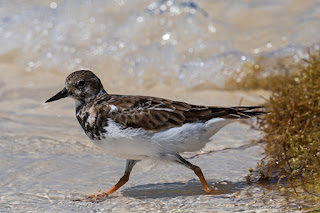A couple of months ago a Western Meadowlark was reported just south of where we live in Lambton County. We had observed this bird in our travels out west but this would be a new bird for our Lambton list so I jumped at the chance to observe it. The bird was perched on a hydro wire actively singing upon my arrival.
Some cool facts about the Western Meadowlark from Cornell All About Birds
Although the Western Meadowlark looks nearly identical to the Eastern Meadowlark, the two species hybridize only very rarely. Mixed pairs usually occur only at the edge of the range where few mates are available. Captive breeding experiments found that hybrid meadowlarks were fertile, but produced few eggs that hatched.
The explorer Meriwether Lewis was the first to point out the subtle differences between the birds that would eventually be known as the Eastern and Western Meadowlarks, noting in June 1805 that the tail and bill shapes as well as the song of the Western Meadowlark differed from what was then known as the “oldfield lark” in the Eastern United States.
Like other members of the blackbird, or icterid, family, meadowlarks use a feeding behavior called “gaping,” which relies on the unusually strong muscles that open their bill. They insert their bill into the soil, bark or other substrate, then force it open to create a hole. This gives meadowlarks access to insects and other food items that most birds can’t reach.
The Western Meadowlark is the state bird of six states: Kansas, Montana, Nebraska, North Dakota, Oregon, and Wyoming
The Western Meadowlark is the state bird of six states: Kansas, Montana, Nebraska, North Dakota, Oregon, and Wyoming


































